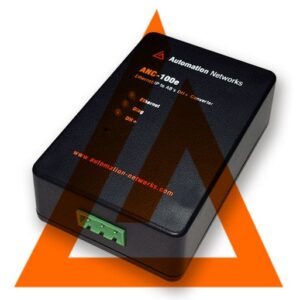5 Considerations for Integrating EtherNet/IP into Your Device
By Brian Pratt & Mike Mann, Senior Systems Engineers, https://pyramidsolutions.com/2016/08/5-considerations-integrating-ethernetip-device/
Implementing EtherNet/IP on any device can be intimidating, especially if you have never done so. But don’t worry, it doesn’t have to be!
The most crucial part of any EtherNet/IP project is appropriate planning and understanding of the basics. Without taking these preliminary steps and gaining this knowledge, you could end up developing a product that doesn’t provide proper functionality or testing a device that repeatedly fails, while spending more time (and money!) on the project than you anticipated. Trust us – we see it all the time.
To help you out, we assembled a list of the top five considerations for integrating EtherNet/IP into a device.
1. Understand Your Product Requirements
Before attempting to integrate EtherNet/IP into your product, make sure you can answer the following questions:
- What am I trying to achieve with an EtherNet/IP-capable device?
- How will a user configure/use my device?
- What specific rules, standards or requirements are there for developing an EtherNet/IP device?
- What type of device and services do I require?
- Do I need ‘Scanner’ or ‘Adapter’-class functionality, and do I know the difference?
2. Learn the Basics of CIP/EtherNet/IP
To skillfully meet your needs, you’ll need at least a rudimentary understanding of some of the basic terms and concepts related to EtherNet/IP. This familiarity will help you answer the questions posed above.
Take a moment to understand the following key terms and concepts:
The relationship between CIP and EtherNet/IP: EtherNet/IP is a superset of the “Common Industrial Protocol,” providing a layer of encapsulation for Ethernet networks.- The CIP object model and object library: CIP is an ‘object-oriented’ protocol, and certain objects are required to pass conformance.
- “Explicit” vs. “Implicit” (I/O) communications: Which types are easier to integrate with programmable logic controllers (PLCs)? Which are the most efficient type for my product?
- “Connected” vs. “unconnected” messages: What level of traffic do I expect on my network? How quickly do I need to know of disrupted communication?
- “Scanner” vs. “Adapter”-Class functionality: Is my device a client/originator, server/target, or both? Do I need to initiate communications or just respond to requests?
The answers to these topics and more can be found in the ODVA EtherNet/IP Quick Start Guide – a great resource we highly recommend. You can also contact one of our solution consultants with further questions.
3. Take Advantage of ODVA Resources and Understand ODVA Rules
ODVA is the organization that maintains the EtherNet/IP and CIP standards. They also provide a number of resources you will need if you intend to release an EtherNet/IP-capable device. Items you must have:
a) Vendor ID – This identifies your company. You are required to allocate one from ODVA. ODVA assigns vendor IDs and maintains a central repository of all known and licensed vendors. You can get your vendor ID here.
b) CIP and EtherNet/IP Specifications – ODVA provides the full technical specifications and requirements for CIP and EtherNet/IP protocols. They require that you purchase and maintain these documents.
c) Conformance Testing – ODVA coordinates and executes the tests that verify your device as conforming to the EtherNet/IP standard. The ODVA Terms of Use Agreement requires that your product pass conformance testing before Our own EtherNet/IP stacks make it easy for your products to gain ODVA conformance in no time.
d) Interoperability Testing – This is an additional level of testing that ODVA performs. It tests a device’s ability to work with other devices and to see if it meets certain functionality outside of conformance. ODVA holds multiple PlugFest events every year where vendors bring their devices for testing.
Note: Access to these resources involves fees.
4. Be Mindful of Your Product Platform and Performance
Make sure your product is ready for EtherNet/IP! EtherNet/IP utilizes TCP and UDP communication, and your product platform will need an Ethernet port and a compatible TCP/IP stack (you will need more resources if you are going to support DLR).
Make sure your device is powerful enough for your specific application needs. Large amounts of I/O data or fast update times require more resources from your platform. There is no hard and fast rule to determine if your device is powerful enough. The answer typically depends on the efficiency of your EtherNet/IP implementation and remaining bandwidth and resources available on your product.
Also, note that the adoption of “CIP Security” is on the horizon. “CIP Security” is a set of security extensions to the EtherNet/IP standard, which encrypts traffic using (D)TLS. Utilizing (D)TLS security libraries can increase your performance and memory requirements significantly.
5. Choose Your EtherNet/IP Stack Implementation
Armed with your newfound EtherNet/IP knowledge, you have a number of options now available for implementing EtherNet/IP on your device:
- Implement your own EtherNet/IP stack, using the official ODVA specifications to guide you. As a point of interest, the ODVA specifications are thousands of pages, spanning multiple volumes. This can be a particularly overwhelming option, for newcomers to EtherNet/IP.
- Find a knowledgeable partner that offers a field-proven and conformant EtherNet/IP solution. This can provide the shortest path to successfully developing your product.
At the very least, do your homework. Integrating EtherNet/IP into your products does not need to be a daunting task. Pyramid Solutions provides a robust EtherNet/IP stack solution as part of our NetStaX line of protocol stacks and tools. Our Scanner and Adapter stacks are portable for cross-platform use, with wide industry acceptance. Products developed with Pyramid Solutions’ EtherNet/IP stacks routinely pass ODVA conformance the first time through.
Check out how we’ve helped out other organizations like yourself.
Pyramid Solutions also provides consulting, training, development services and support to help integrate the proper NetStaX EtherNet/IP stack into your specific product and platform and to help get your product developed and tested.




